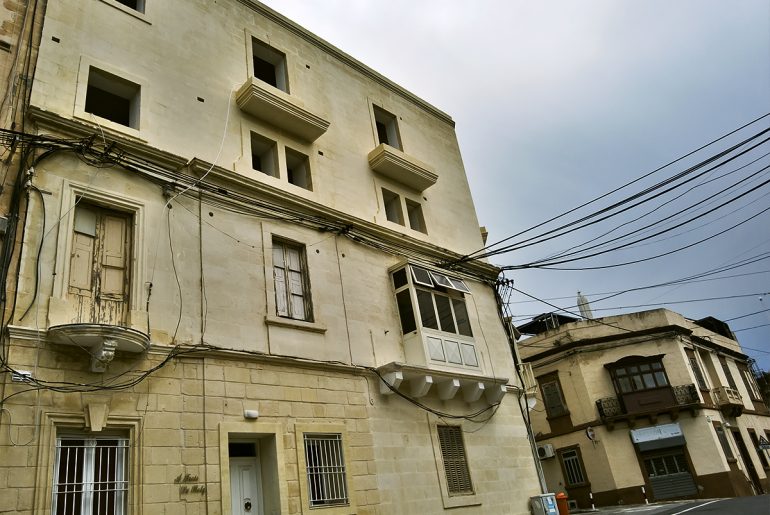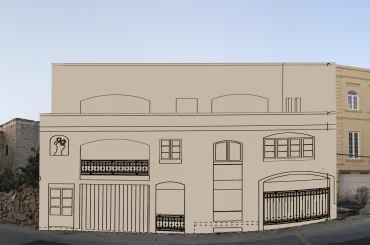After three years and four court processes, a man in Pieta has prevailed over arbitrary planning decisions as the Court of Appeal has twice revoke the development permit next door. Now the man, who is represented by the lawyer Claire Bonello, has escalated his legal battle to seek remedy from the building that has since been constructed.
Frank Zammit’s two-storey townhouse, situated in the Urban Conservation Area of Pieta, has now been overshadowed by the five-storey building he has been battling for three years. His house is now sandwiched between the five-storey development to the south and a three-storey building to the north. The rest of the street remains largely intact, lined up with two-storey townhouses.
The case symbolises the oppressiveness of the planning system: the arbitrariness of Planning Authority decisions, the failure of the planning tribunal that reviews development permits, and the elusiveness of remedy in a legal system where the road to justice tends to become labyrinthine.
The development that Zammit has been fighting involved the construction of a maisonette and seven small flats over five floors. Although the policy is clear on permissible height – which is defined by the neighbouring properties according to a schematic representation known as Area of Influence, illustrated in specific figures in the policy document DC15 – the Planning Authority still granted permit for four-storey façade even though the height at façade had to be two storeys (a third, recessed floor could have been permitted).
The Planning Commission justified approval on the basis that, on one side of the corner site of the proposed buildings, there were adjacent or contiguous buildings of the same height.
Zammit appealed, and the Environment and Planning Review Tribunal, which hears appeals against development permits, reconfirmed the permit.
Then Zammit went to court, and the Court of Appeal upheld Zammit’s appeal and sent the case back to tribunal. The tribunal heard the case again and reconfirmed the permit a second time.
Zammit went to the Court of Appeal yet again, and the court then revoked the development permission last December. In so doing, the court upheld a point that it has made repeatedly: when applicable planning policies are precise, the Planning Authority cannot approve a proposal on the basis of other similar buildings in the vicinity.
The Court of Appeal has reiterated this point several times in the past few years. It explained that, when it comes to considerations the Planning Authority has to give regard to in its decisions, the law puts policies above commitments, and this means that commitments (any similar adjacent or nearby buildings) cannot take primacy or precedence over policy in cases in which applicable policy is unequivocal or unambiguous.
The permit is now revoked, but the building has been completed. And Zammit has now filed a judicial protest against the planning tribunal – and the Maltese State – requesting unspecified remedies, one of which would be for the government to demolish the building.
The State advocate has not replied to the judicial protest.
Donate to Planning Emergency
The investigative articles into perverse planning or damaging development published on this website take time, resources, and effort to put together. These articles make impact by the robustness of the research and the professionalism of the reportage. Your support is needed to sustain this kind of impactful reportage. This website's donation setup itself is uniquely transparent, with targeted amounts that allow tracking of donations in real time. Contribute as little as €5 to sustain active planning journalism that makes an impact.
This article is part of a series on the Planning Emergency in runup to a national protest on Saturday.





